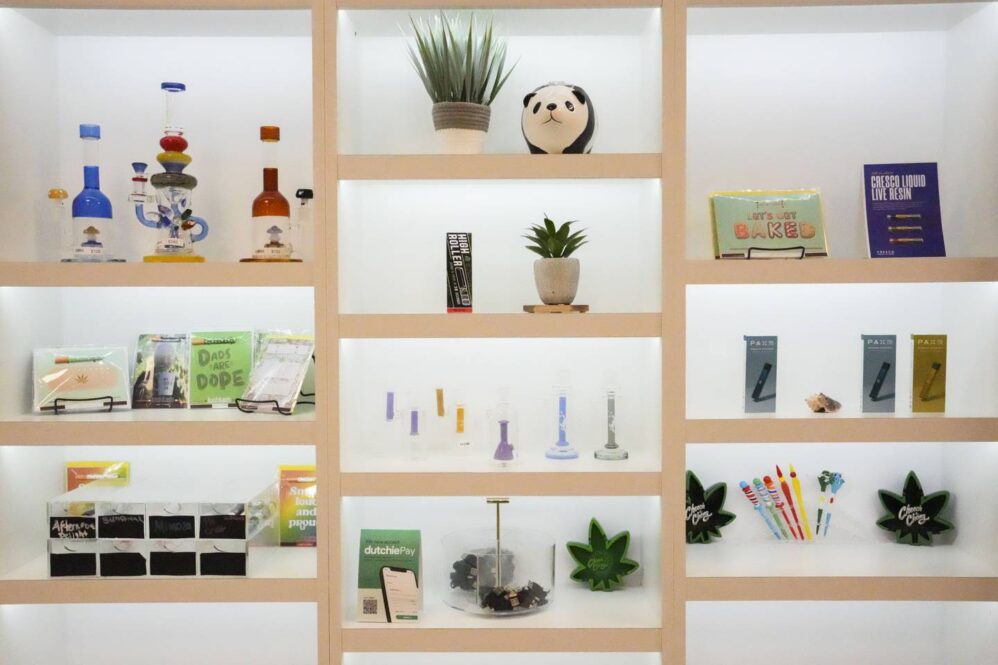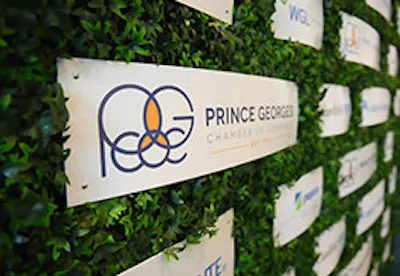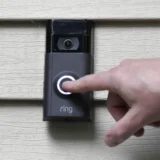By Michael Hughes
BALTIMORE SUN: Beginning July 1 recreational cannabis will be legal for adults 21 and over, and you might be thinking of partaking. But the options are many: to smoke or vape? Edibles, but what strength? And what exactly are concentrates such as wax, shatter and rosin? To help you navigate the wild new world of weed, we’ve put together a no-nonsense, science-based guide to shopping for and using cannabis products, for newbies or veteran tokers — with input from two of the country’s top cannabis experts.
As The Banner’s resident cannabis expert — I’ve written about cannabis and other psychoactives for over 15 years, and was editor of a regional cannabis magazine — I’ve covered many aspects of this fascinating plant. I’ve interviewed a mother who used cannabis to treat her 3-year-old son’s seizure disorder when nothing else would work, toured farms and dispensaries and spoken to people across the state who love and benefit from Cannabis sativa.
I’ve also used the plant most of my adult life, as an adjunct to creativity and writing, for enhanced enjoyment of art and music, and for socialization and relaxation. Nonetheless, I’ve also experienced the downsides of cannabis, including paranoia and anxiety from overintoxication, which is responsible for most cannabis-related ER visits. I’ve also met people with cannabis use disorder, and watched dependency and single-minded focus on getting high wreck lives.
Cannabis is complicated — it can heal and it can harm. The key is using it wisely and responsibly, which is why I’ve put together this guide, with insights from cannabis experts, to getting the most out of this remarkable plant.
Who uses cannabis and who should stay away
About 1 in 10 Maryland adults uses cannabis, according to a 2022 report from what was then called the Maryland Medical Cannabis Commission, with over 160,000 patients currently enrolled in the medical cannabis program. And although cannabis is considered generally safe when used responsibly for most adults, particularly when compared to alcohol, it’s easy to go overboard if you don’t know what you’re doing.
https://buy.tinypass.com/checkout/template/cacheableShow?aid=yacOo1smpu&templateId=OTJZVH8SQF4C&gaClientId=2064436216.1687285162&offerId=fakeOfferId&experienceId=EXV7WPXD1GBX&iframeId=offer_ccb81ff53906463d5bc4-0&displayMode=inline&pianoIdUrl=https%3A%2F%2Fid.tinypass.com%2Fid%2F&widget=template&url=https%3A%2F%2Fwww.thebaltimorebanner.com
But some folks, experts say, should stay far away: those who are pregnant or breastfeeding (or could get pregnant) and teenagers.
“There’s a good body of evidence that it may harm the development of the teenage brain,” says physician and author Peter Grinspoon.
People with a history of psychosis or schizophrenia, or a family history of either illness, should also be extremely careful.
If you have any questions or concerns about using cannabis, Grinspoon recommends open communication with your health care providers. An honest dialogue, he said, can help you anticipate any problems and avoid dangerous drug interactions.
And if you’re new to this plant, or getting reacquainted, be sure to follow the mantra of every cannabis expert: Start low and go slow. “My advice to people … is take your time, use a very small dose,” Grinspoon said. “And then if you’re going to make a mistake … make a mistake that you don’t take quite enough.”
:quality(70)/cloudfront-us-east-1.images.arcpublishing.com/baltimorebanner/7MA6QWCZOJEMJJVVSUUQE3PCIU.JPG)
Key cannabis terms
Stepping inside a cannabis dispensary can be overwhelming. The number and variety of products is daunting, particularly for those who have never imbibed, or those whose last experience was with a poorly rolled joint in college.
Sign Up for Alerts
Get notified of need-to-know
info from The Banner
Here’s a glossary so you can talk the talk with your budtender.
Cannabinoids
Cannabinoids are chemical compounds within cannabis that interact with the body’s endocannabinoid system, which regulates memory and learning, sleep, hunger, pain control, immune function, and other bodily processes, as well as creating the “high.” Knowing how to choose the mix and levels of cannabinoids can dramatically improve your experience.
THC — technically, delta-9 tetrahydrocannabinol — is the primary cannabinoid, and the reason people use cannabis recreationally. THC and other cannabinoids work their magic, whether medicinally or for pleasure, because we humans are literally wired to respond to these compounds in myriad ways. THC levels in cannabis flower vary in potency, with some products nearing or exceeding 30%. The more THC, the more high you will get. But according to most cannabis experts, that’s not the ideal way to evaluate a cannabis product.
“It should be about the experience. It should not be about the highest [THC] number, which is usually inflated and inaccurate anyway,” said Dr. Ethan Russo, a neurologist, psychopharmacology researcher and author.
CBD, or cannabidiol, is the other hugely popular cannabinoid, and has been researched extensively as a medicine, including Food and Drug Administration-approved treatments for cancer pain and epilepsy. Grinspoon notes that an astonishing “1 in 7 Americans is on [it].” You’ve likely seen the ubiquitous CBD shops in strip malls, and CBD products are everywhere from vitamin stores to gas stations, but as always — caveat emptor, as they are not regulated by the FDA and quality and label accuracy vary widely.
Pro tip: Buying a cannabis product that contains some CBD along with the THC can be a wise choice, Russo said. “It is going to reduce the anxiety” that can sometimes accompany THC and “counteract THC adverse events,” he said.
Other cannabinoids are also subject to research, including cannabigerol (CBG), which is of special interest to Russo, although it’s rare to find it in dispensaries on the East Coast. “CBG [has] pronounced anti-anxiety effects,” Russo said. “This is what the world needs now — a better anti-anxiety agent that’s not sedating and not addictive.”
It also has antibiotic properties — including for drug resistant bacteria strains — and shows promise for cancer treatment.
:quality(70)/cloudfront-us-east-1.images.arcpublishing.com/baltimorebanner/LS64KJ352BA5JED3YMMWOUDZMI.JPG)
Chemovars, not strains
Like wine nerds discoursing on varietals of wine, cannabis connoisseurs go on at great length about the tastes, smells and effects of the plant’s various strains — which should, according to Russo, be properly called chemovars.
“[Strains are] not applied to plants,” he said. “That’s for bacteria and viruses.”
Breeding and hybridization has created a vast array of chemovars, with bizarre nomenclature — from pineapple diesel to green crack, garlic cookies and peanut butter breath. What sets apart these strains, and what makes their tastes and effects different, are the balances of cannabinoids, such as THC and CBD, and the terpenes, which are chemical compounds that change the flavors, aromas, and alter the psychoactive properties.
Indica and sativa
Most budtenders will ask you if you prefer a sativa or indica strains when you purchase cannabis. Russo advises ignoring this common, but “scientifically meaningless,” myth.
“The concept of in common parlance of sativa and indica goes something like this — that sativa is head high, and indica is a body high. This has been totally debunked in scientific investigation,” he said.
Your best bet? Like with any product you’re going to put into your body, read the label. All cannabis sold in Maryland has a listing of cannabinoid and terpene levels.
:quality(70)/cloudfront-us-east-1.images.arcpublishing.com/baltimorebanner/Y3W25YHUNFHGLAMU4J4FHO5HW4.jpg)
Terpenes
Terpenoids, commonly called terpenes or terps, are the naturally occurring chemicals that give cannabis its myriad mixtures of aromas and tastes. But they also contribute to its physical and psychological effects, which when combined with the cannabinoids is known as the “entourage effect.”
Russo’s research at Johns Hopkins Medicine is studying those entourage effects, finding one terpene that reduces the anxiety caused by THC and another that reduces the short-term memory impairment from THC.
Although the science is still in its early stages, you can find purported effects of various terpenes in handy charts online, such as this one. But ultimately, finding which strains/chemovars work best for you is what Grinspoon calls a matter of “trial and error.”
“That’s why I have people journal about [different products],” Grinspoon said. “Did it help? Did it not help? What did you like about it? What didn’t you like about it?”
Russo agrees. “It may take a lot of homework and a lot of effort.”
Cannabis products
Flower
Good old Mary Jane, herb, ganja, weed, kind buds — the harvested plant is about as straightforward as it gets, but it’s now called flower, because the prized part of the Cannabis sativa plant is its flowering buds, where the THC and other cannabinoids are concentrated.
Pros: As simple as it gets. Quick acting when smoked or vaped, so it’s easy to adjust to the preferred level of high. An abundance of chemovars (strains) with wildly varying effects that can be tailored to your activities — energizing and stimulating for an afternoon hike, or relaxing and sedating for chilling on the couch watching TV.
Cons: The smell can be overpowering and annoying (”loud”) when smoked, much less so when vaped. Smoking can cause lung irritation and the smoke contains tar, benzene and other byproducts that aren’t good for you (which is why some medical experts recommend vaping the dried flower; more on that below). Choices of products and the variety of strains can be overwhelming and subject to a lot of hype and misinformation.
Edibles
Edibles are, as you might expect, products you can eat (or drink) that have been infused with THC. These range from gummies to tablets, chocolates, candies and elixirs.
For many new to cannabis, edibles seem the easiest and safest option. After all, there’s no heady smoke filling up your living room, chewing a gummy is discreet and tastes good, so what’s there to worry about? Plenty, say cannabis experts. For one, your liver’s processing of oral THC converts the delta-9 THC — the active ingredient when smoked or vaped — to delta-11, which is stronger in its psychoactive effects and longer-lasting.
“People have to be extremely careful,” Russo said. “For two reasons: One is that onset is slow and you can go from zero to 100 miles an hour in the drop of a proverbial hat. So a common mistake is to take some amount of an edible. Nothing’s happened after an hour and then taking more is a recipe for disaster for the uninitiated.“
Grinspoon also advises caution. “People describe it as a little bit more psychedelic,” he says. “Be particularly cautious getting yourself up to speed on edibles.”
Most edibles sold in Maryland have a standard dose of 10 milligrams, but you can often find edibles with lower doses. If all you can find is 10 mg products, start with a quarter (2.5 mg) and wait for a few hours before taking another dose. At most, you’ll feel nothing, but it’s better than having a panic attack from too much THC.
Pros: Easy, convenient, doesn’t make your house smell like a stoner dorm room.
Cons: Can be wildly unpredictable based on individual metabolism. The high tends to be stronger; some call it psychedelic. Responsible for most cannabis-related emergency room visits. Use with care and keep locked away from children, who might mistake your weed gummy for regular candy.
:quality(70)/cloudfront-us-east-1.images.arcpublishing.com/baltimorebanner/CNJQUJ2LU5E4BATD3N57VTAFUI.JPG)
Tinctures
Though nowhere near as popular as smoking or vaping, tinctures are recommended as ideal introductions to the plant by many experts, including Grinspoon and Russo.
“If someone wants oral administration, which I really encourage … tinctures and oils are going to be a better and more economical approach,” Russo says. “It’s quicker than say eating a cookie or a brownie.”
Grinspoon agrees. “You you can get preparations with high CBD [a popular and non-intoxicating cannabinoid] and some THC. You just start with a milligram or two of THC and go up very slowly, one drop or two drops under your tongue. That’s, I think, a very safe and gentle way to get people started on cannabis.”
Pros: Easy to dose in small increments, quickly absorbed and fast acting.
Cons: Limited number of products, can be expensive. Higher-potency tinctures may not be available unless you’re a medical patient.
Concentrates
Concentrates are just that — concentrated resins of the plant (technically, the cannabinoids and associated chemical compounds found in the plant’s trichomes, the sticky, microscopic appendages that look like hairs with a dusting of white crystals). In recent years the varieties of concentrated cannabis products have increased in number, and now they’re sold as oils, wax, dabs, shatter, budder or resin.
“Live” concentrates are made from fresh frozen cannabis, and are richer in terpenes and considered more “full spectrum” — containing a wide variety of the plant’s chemical components. They’re also more expensive.
The consistency of the final product determines its nomenclature. Liquid oils are primarily used in vape pens and cartridges. Budder is, well, buttery. Shatter is glass-like and wax is waxy. Some of the most prized (and expensive) concentrates are resin and rosin, both of which are extracted with low heat and pressure and contain most of the plant’s compounds in their purest, unadulterated form.
Although many varieties of concentrates are available to medical patients, only concentrated oils — like those found in vape pens and cartridges — are available to adult-use consumers.
Russo advises against concentrates for newcomers. “It is very convenient, admittedly, a way to get high in a hurry, easy to conceal, usually the vapors aren’t objectionable the way smoke is. So they’re very convenient, very fast, but it clearly not for the uninitiated.”
Pros: Concentrates get you very high very quickly and are relatively inexpensive. Vape pens produce less odor than smoking, are much more discreet and many experts believe they are safer than smoking (though the data is limited).
Cons: Very high THC levels can be problematic for those who do not have tolerance. Vape pens and cartridges, although extremely popular, have not been extensively tested for safety, Grinspoon said. Since the data is so limited, caveat emptor.
Topicals
Yep, you can slap a weed patch on your arm. Isn’t technology wonderful? Though not nearly as popular as other preparations, transdermal patches, topical creams, lotions, gels and similar products are great for people who’d rather avoid edibles, smoking and vaping.
Pros: Slow but steady absorption. As discreet as it gets.
Cons: Sometimes hard to find, can be pricey per dose.
Consumption methods
Smoking or nonsmoking?
When most people think of using cannabis, they think of smoking, to the point where “smoking weed” is pretty much the default description of its use. Joints, blunts, bowls (pipes) and bongs have been the norm. But nowadays, there are better ways to get the benefits without the byproducts — and skunky miasma — of combustion.
Neither Grinspoon nor Russo recommend smoking.
“If you take a puff a week it wouldn’t hurt you,” Grinspoon said. “But if you smoke five or six times a day, it just can’t be good for your lungs.” And although smoking cannabis isn’t associated with lung cancer or COPD, “it is associated with irritants, like bronchitis … but you know, just the tar, the benzene, and the polycyclic aromatic hydrocarbons can’t be good for lungs.”
As an alternative to smoking, both recommend vaporizing the dried flower.
“If you need to inhale it, I’m a fan of the dry herb vaporizers,” Grinspoon said. “You grind a little bit up and put it in and heat it up. … You don’t get the combustion product. So that’s a safer way to inhale it.”
Electronic vaporizers can be purchased online and at many cannabis shops, from relatively inexpensive pocketable and portable models ($70) to very pricey desktop units ($700+). Ask around and read reviews.
Vapor cartridges and pens
You can buy disposable, all-in-one oil pens or oil-filled cartridges that require their own battery. Most dispensaries sell cheap ($10) batteries, and you can buy pre-filled cartridges and screw them onto the battery. Most batteries are charged via USB.
Some companies sell branded vaporizer devices that use proprietary cartridges. If you trust the company and its products, these are fine, but you are limiting yourself to those products and can’t use standard cartridges from other growers and processors.
As with flower, look at the labels. Do you want high THC or a balance of THC and CBD? Which terpenes are important to you? And remember: The THC in oil vapes is highly concentrated when compared to smoking or vaporizing flower. Be careful and start low.
:quality(70)/cloudfront-us-east-1.images.arcpublishing.com/baltimorebanner/3IZKVOQLT5CLVCKJIVIORPEOJM.jpg)
Sublingual and topical products
Although tinctures are nowhere near as popular as concentrates or flower, many experts consider them the safest. You can also find tinctures with less common cannabinoids, like CBG and cannabidiolic acid (CBDA). For those who want to avoid alcohol, you can find oil-based tinctures. Read the label or consult with a knowledgeable budtender or clinician to find which cannabinoids and terpenes might work best for your needs.
Follow the directions on the bottle. Both Grinspoon and Russo advise starting with a milligram or two under the tongue, and holding it in the mouth for at least a minute before swallowing. You can then gradually titrate, or work your way up, to your preferred dosage. Tinctures work quickly because the veins beneath the tongue can absorb the active ingredients.
Dr. Dustin Sulak has a great video discussing the use of tinctures.
Topical products range from transdermal patches to gels and creams. Many have CBD, which Russo and Grinspoon recommend. Follow instructions on the product label.
Other frequently asked questions
Uh-oh, I’m way too high. What now?
Despite best intentions, sometimes even the most experienced cannabis user can get uncomfortably high. The best remedy? Time, quiet and a calm friend to talk you down, Grinspoon said.
Russo concurs: “The fact is, no matter how bad it is, that this is a temporary condition on people should be reassured that this is going to pass in time.”
But there’s another option you might have in your refrigerator already: citrus.
“In terms of first aid, lemonade, or any cool citrus drink, can make people feel better,” Russo said. “This has been reported for hundreds of years, particularly in the Middle East.”
When to get medical help?
“If you truly are having a full-blown panic attack, you might have to go to the emergency room to get some medications to calm down,” Grinspoon said. “If you’re having chest pain, or really, really rapid heart rate, which can happen … then you absolutely have to go to the emergency room.
“Most of the time,” he says, “empathic reassurance takes care of it.”
Still more reason to stick with the mantra: Start low and go slow.
How should I store it?
Like the spices in your cupboard or produce in your fridge, cannabis flower is perishable and best when it’s fresh. Properly cured cannabis flower is best within six months of purchase. The cannabinoids and terpenes degrade over time from exposure to too-high or too-low temperatures, airflow, light and excess humidity, so treat your stash with care and, like Goldilocks, aim for the “just right” conditions.
One of the worst containers is the old-school plastic baggie. Plastic, in general, causes the buds to sweat, which can produce mold, and static from the plastic can detach the prized trichomes. Glass containers, such as Mason jars with screw-on lids, are ideal, especially if you keep them in a cool, dry spot. Pack the jars as tightly as you can, which means there’s less air to cause degradation. Don’t store them in your refrigerator or freezer, which increases the risk of mold.
Dispensaries sell specialized cannabis containers. They’re airtight and block UV light and the funky smell, but they can be expensive. You can also buy humidity packets to place in your glass jars to keep the humidity in the Goldilocks zone, which is usually 60-65% humidity.
But preserving freshness is just part of the storage equation: Safe storage is critical. That means keeping your cannabis out of reach, out of sight and inaccessible to kids, pets, babysitters — basically anyone but yourself. Calls about accidental ingestion of cannabis to poison control in Maryland increased eightfold from 2018 to 2021, according to a report from what was then called the Maryland Medical Cannabis Commission — and in 2021, more than half of those calls were from parents of children under 5 years old who had consumed edibles.
And if you think your teenage kids aren’t sneaky and won’t find your stash, I have some stories from friends I could share.
“It’s incumbent upon the parents to make sure there’s no possibility of access to children,” Russo said. That means a lockbox or a small safe, ideally with a key or combination code that only the adults can access.
Other resources
Cannabis use disorder is real. If you or someone you know may be having problems with cannabis use, you can contact the Substance Abuse and Mental Health Services Administration’s National Helpline.
For checking out product details and availability, many Maryland dispensaries post their inventory on Weedmaps or Leafly.
Grinspoon and Russo have websites with informative science-based articles and links to peer-reviewed publications.
If you’re looking for a local physician who may be able to treat you with cannabis, visit the Society of Cannabis Clinicians.










